I'm probably not the only person who can hardly believe that 2017 is already over and that we're now in 2018. Today though, most of my colleagues here at the European Space Agency were back at work and another year is underway. Seeing as 2017 has been another exciting year for the space scene, I thought it would be appropriate to do a short summary of the year, and do a recap of the highlights from each month of 2017.
I hope you'll enjoy!
January
The Saturn probe Cassini began the end of its 12-year long mission orbiting Saturn. The final phase of the mission had Cassini fly in between Saturn and its rings, something no other space probe had ever done before. During this stage, Cassini sent back new data that had previously not been accessible before aiming to make a controlled crash landing later in 2017.

Artist's impression of Cassini at Saturn as it enters below its rings
Image credit: NASA/JPL source
In Europe, we saw the successful launch of SmallGEO. The satellite is Europe’s response to a new market demand for more flexible and modular telecommunications platform. It was also a significant achievement for European industry, as it marked the first commercial telecommunications satellite built predominantly by the satellite manufacturing company OHB System AG.
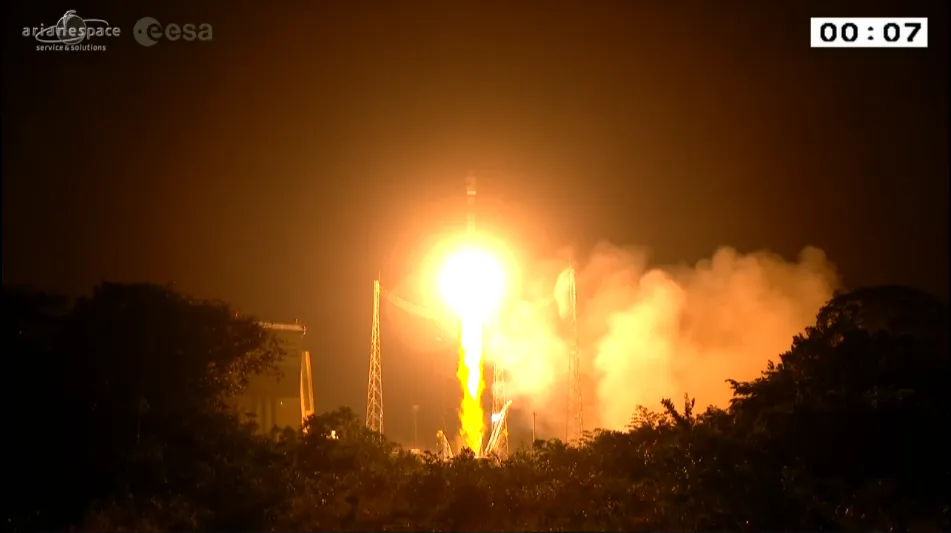
Launch of SmallGEO on a Soyuz rocket from Europe’s Spaceport in Kourou, French Guiana January 28
image source
February
The biggest highlight of the month in terms of setting records and pushing barriers, was when India's Polar Satellite Launch Vehicle (PSLV) deployed no less than 104 satellites with one launch on February the 14. This was a new record for the number of satellites deployed with the same launch. It was a proud moment for the Indian Space Research Organization (ISRO) who operated the launch. It was also a huge success for the American Earth Observation Satellite company Planet who could add 90 new satellites to their constellation with the launch. To me, this was a very powerful demonstration of where we are going in enabling cheaper and more efficient access to space also for smaller payloads.

People watch as India’s Polar Satellite Launch Vehicle (PSLV-C37) carrying 104 satellites in a single mission lifts off from the Satish Dhawan Space Centre in Sriharikota, India February 15, 2017. (Reuters | Manila Bulletin)
image source
For the exoplanets enthusiasts out there, the biggest news of the month was certainly when NASA revealed that they had discovered the first known system of seven Earth-size planets around a single star. From the information released at the time, it was deemed possible that all of the planets could have liquid water, a key factor when determining the likelihood of finding life.

NASA Jet Propulsion Laboratory video: "A Treasure Trove of Planets Found"
March
One of the scientific highlights of the year was when ESA's research satellite Swarm finished mapped all magnetism in the Earth's outermost layers. The data will provide scientists with a wealth of new data to learn more about the magnetic field, which occurs because of processes deep in the Earth's interior. You can read more about the discovery and also find more information about the mission on ESA's dedicated info page about Swarm here.

Artist's impression of the Swarm satellites image source
March also saw the launch of the European Sentinel-2B imaging satellite of the Copernicus program. The two sentinel 2 satellites are the optical imaging satellites in the Sentinel constellation which is newest and most ambitious Earth Observation program in Europe. You can still watch the launch on ESA's website here.

Digital illustration of the Sentinel 2 Satellites
image source
Those of you who enjoy my Beautiful satellite images of our Planet series may find it interesting to know that it is images from these satellites that I predominantly use in the series. Adding Sentinel 2B now means that we receive a new image of the same point on the ground twice as frequently as before, opening the space for new applications using the data.
April
This month, Peggy Whitson set a new record to become the American astronaut who has spent the most cumulative time in space at 534 days total. She has also set records prior to that, when in 2008 she became the first woman to command the International Space Station.

American Astronaut Peggy Whitson onboard the International Space Station Image credit: NASA, image source
May
The NASA James Webb Telescope was finally fully assembled and completed its last test held at NASA's Goddard Space Flight Center. The giant space-based telescope set to replace the Hubble Space Telescope in 2019 will spend 2018 at the Johnson Space Center in Houston where it will further tested in extreme temperatures before its long sought launch in mid 2019.

A view of the James Webb Space Telescope image credit: NASA
image source
June
SpaceX successfully launches BulgariaSat-1, making it the first satellite fully operated by Bulgaria. The first stage of the Falcon 9 rocket used for the launch went on to successfully land, as you can see in the video below. Bulgariasat went on to win the 2017 award for "Newcomer Satellite Operator of the Year" (source)
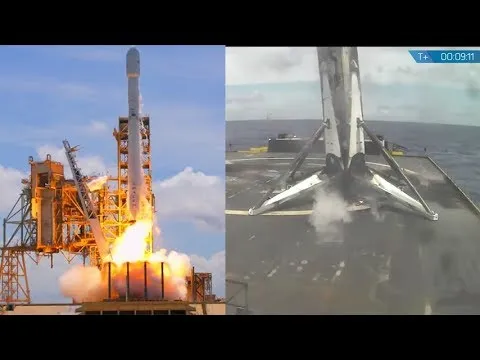
SpaceX successful launch of BulgariaSat-1 followed by the landing of the Falcon 9's first stage
It was a very positive day for those of us who wish to see space becoming increasingly accessible and benefiting for all.
July
Adding to the list of private companies aiming to return us to the moon, Astrobotic Technology Inc unveiled a contract with United Launch Alliance to use their Atlas 5 rocket to send their Peregrine lander to the lunar surface in 2019. The company will aim to send smaller payloads of around 35 kilograms to the lunar surface, a sufficient size for many science experiments.
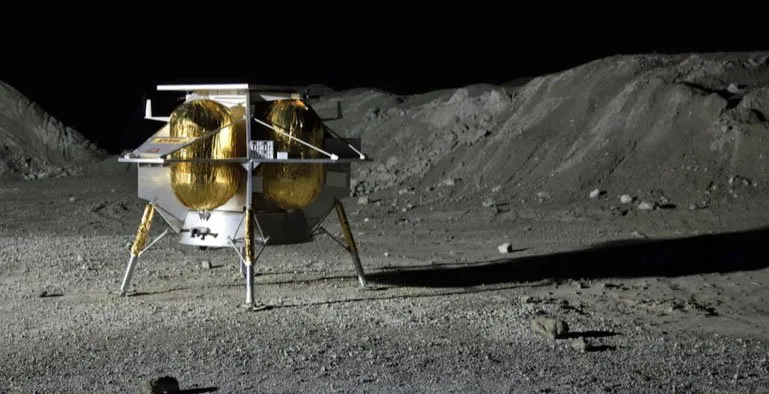
Illustration of the lunar lander that Astrobotic aims to land on the Moon in 2019
image credit: Astrobotic
Images taken by the JunoCam imager aboard the Juno spacecraft are processed and shared by amateur astronomers and space enthusiasts around the world. The Juno spacecraft is the first mission to also carry an instrument intended purely for public outreach. Only in June did it become truly well known following a series of stunning images processed and shared by Seán Doran, such as the one below.
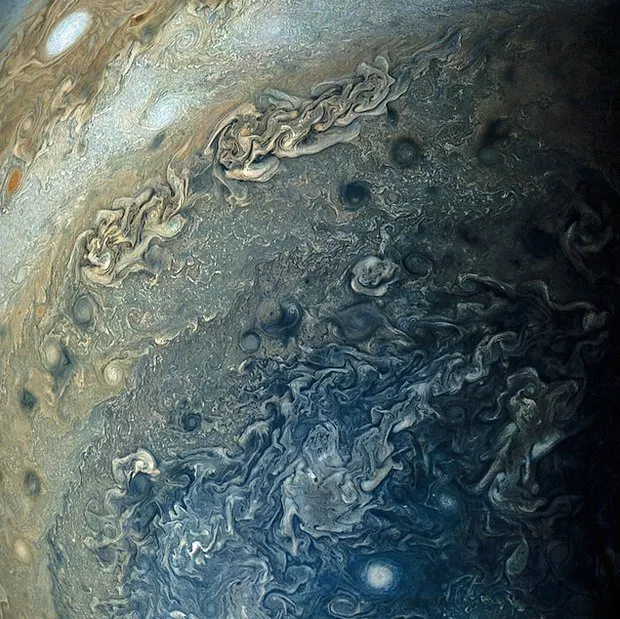
Processed image of Jupiter using the publically available data from the JunoCam onboard NASA's Juno spacecraft
image credit NASA/SwRI/MSSS/Gerald Eichstädt/Seán Doran
August
August 17 was a huge day not only for Astromers but also for the fundamental sciences in general. Then, astronomers made the first-ever observation of a cosmic event using both light and gravitational waves. Using the Laser Interferometer Gravitational-Wave Observatory (LIGO) and advanced Virgo observatories on Earth, the Astronomers could detect the gravitational ripples from when two neutron stars spiraled toward each other and fused together some 130 million years ago.
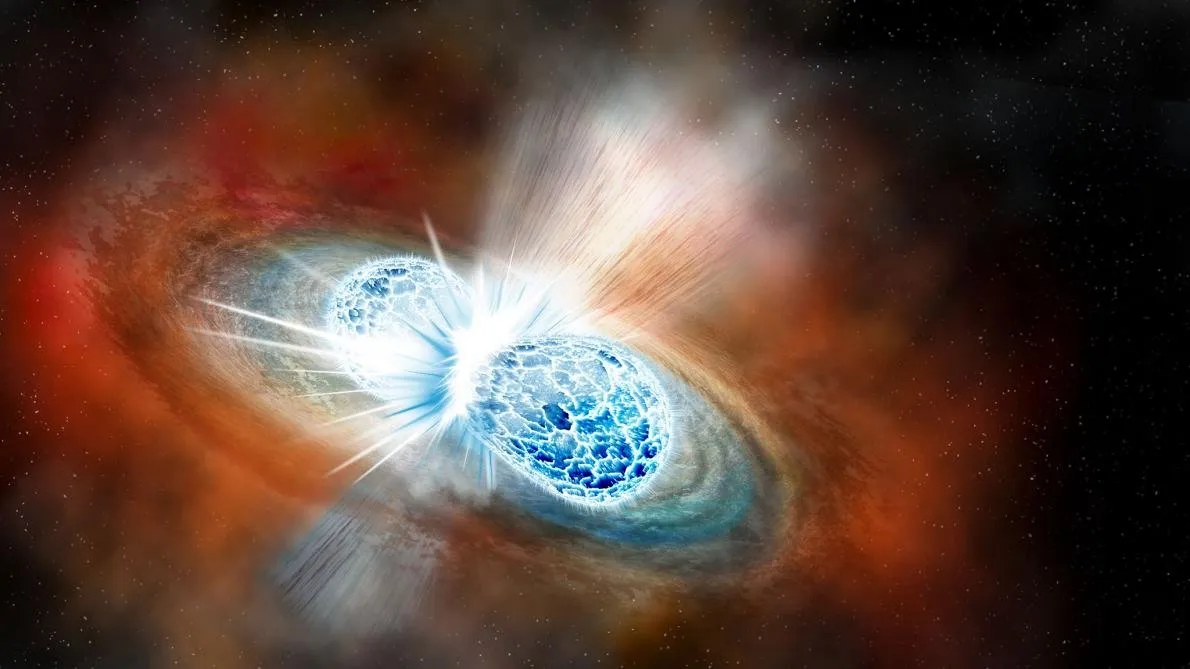
Illustration of the colliding neutron stars image source
September
The biggest event this month was certainly the grand finale of the Cassini mission. After 13 years of researching Saturn and its moons, the spacecraft made its final dive into the atmosphere of the giant ring planet on September 15. You c an read more about it's mission and see some of its stunning images in the post I wrote about it on the day called Ode to Cassini.

Illustration of the grand finale of the Cassini spacecraft as it plunges down towards Saturn image credit: NASA/JPL image source
Later in September, the International Astronautical Congress (IAC), was held in Australia. Here, Elon Musk presented his vision for using SpaceX's future rocket dubbed "BFR" to perform "Earth to Earth" transportation. The talk got a lot of public attention and the idea of using vertical rockets for people transportation between different points on Earth was heavily discussed in the days that followed.
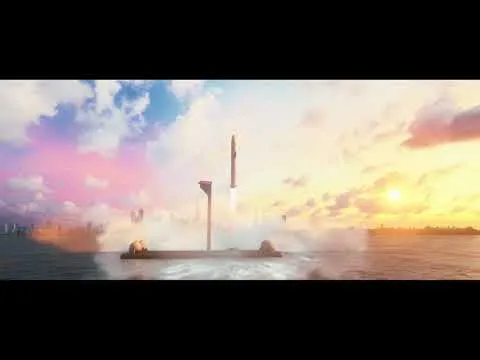
Earth to Earth Transportation video by SpaceX
October
An odd shaped Asteroid was discovered that captures a lot of headlines perhaps thanks to its shape resembling that of a large spaceship. Astronomers suggest that the asteroid must have originated from another star, thus making it the first confirmed interstellar asteroid to have entered our solar system in modern times.

Artist’s concept of interstellar asteroid 1I/2017 U1 (‘Oumuamua)
image credit: European Southern Observatory / M. Kornmesser
The new Sentinel-5P environmental satellite was also launched this month. This satellite is also part of the Sentinel programme mentioned earlier, but the Sentinel 5 occupies a higher orbit and carries different instruments designed to measure air pollution and air quality worldwide.

Digital illustration of Sentinel 5P image credit ESA _image source
It will be used both to help improve environmental quality in cities, but also in research on climate and its connection with pollutants.
November
Astronauts Paolo Nespoli and Randy Bresnik Some took this stunning image of the Orbital ATK Cygnus cargo ship as it delivered new supplies for the astronauts on the station together with new research payloads. The new science experiments brought to the ISS will study how the space environment and microgravity affect microbiology and botany. This includes the effectiveness of antibiotics on astronauts, as well as how plants absorb nutrients in microgravity.
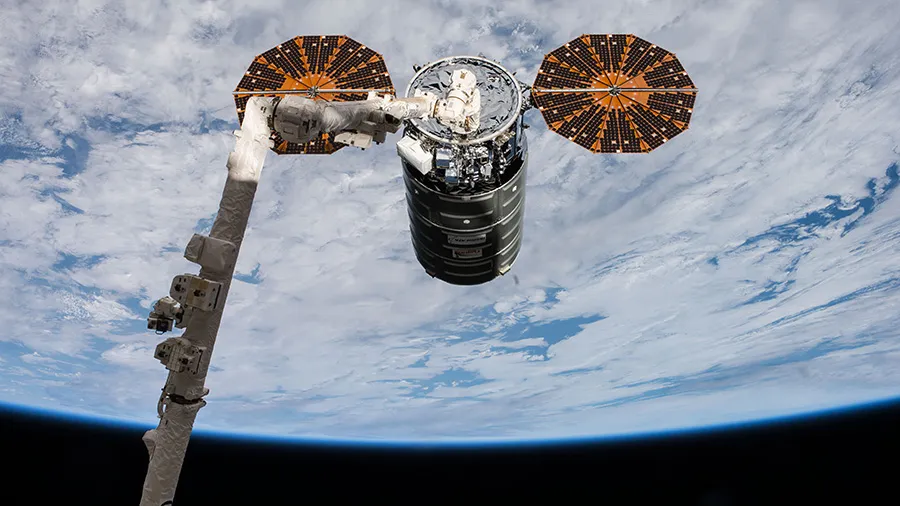
The Cygnus spacecraft as it is picked up by Canadarm at the International Space Station
picture taken by astronauts Paolo Nespoli and Randy Bresnik
image source
December
On December 12, 2017, four new Galileo satellites were launched adding to the fleet of European navigation satellites. Once the satellites were fully operational, tests could show that Galileo is now more accurate than GPS. Applications using both systems, however, can achieve even higher levels of precision and update frequency, something that will become increasingly noticable in 2018 when the Galileo constallation is expected to be complete.
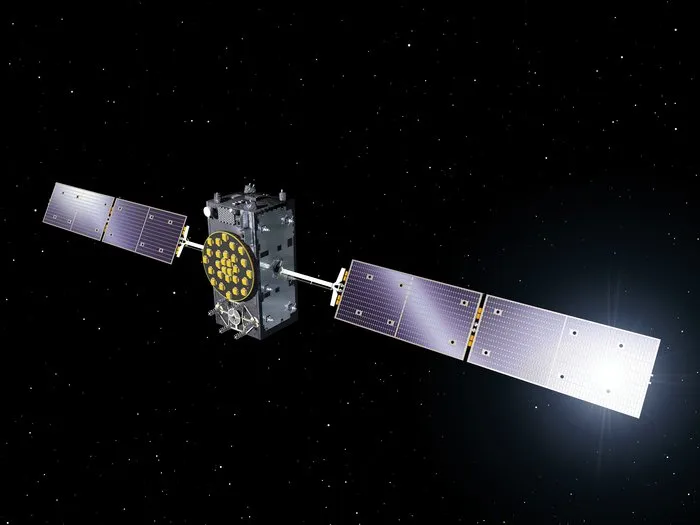
Artists impression of a Galileo satellite in Orbit. Image credit ESA
In America, the year ended with President Donald Trump signing a new US space directive, named Space Policy Directive-1. It states that America will again commit itself to returning to the Moon, this time in both corporate and international collaboration. Exactly how Mr. Trump imagines that NASA will make it back to the Moon with his current budget is however unknown to most in the sector...
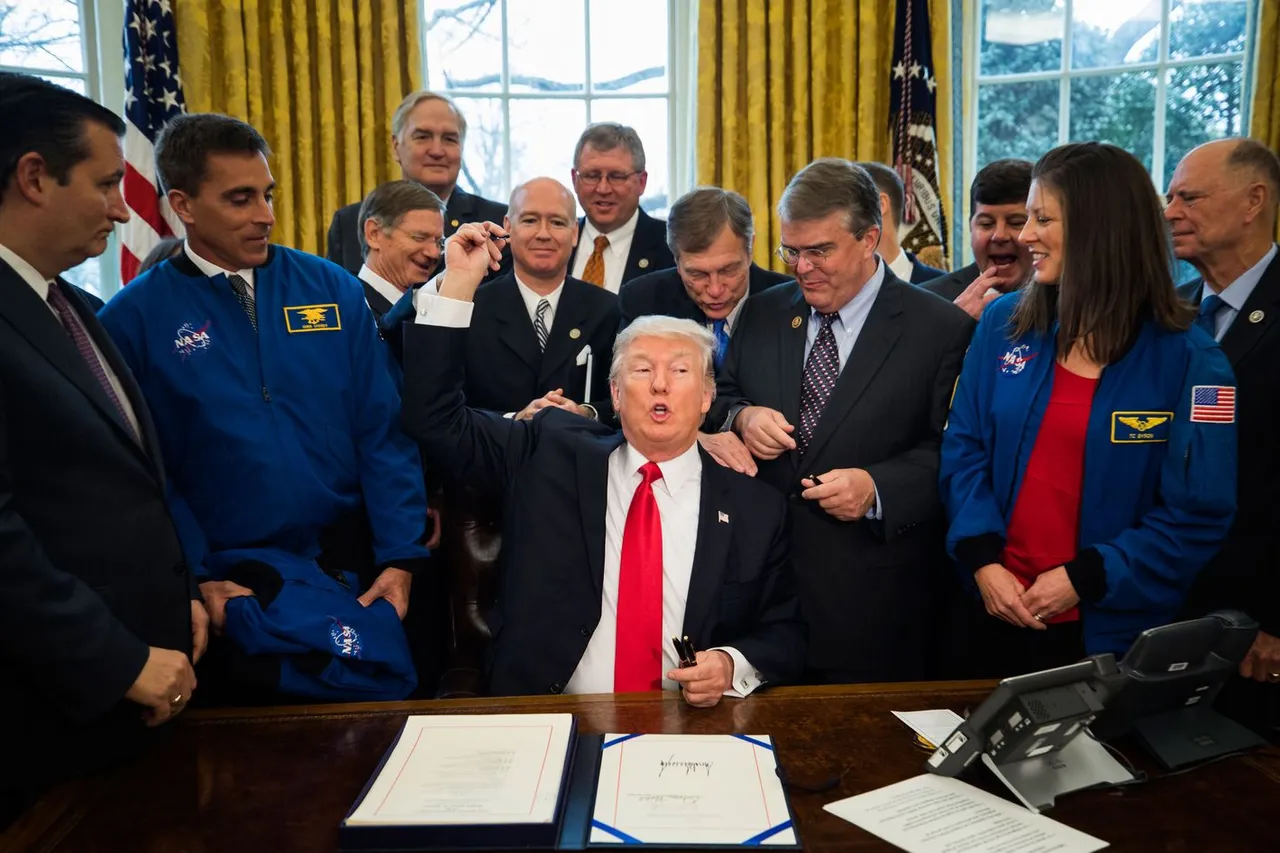
Donald Trump putting pen to paper for a new directive for NASA
image source
Note: I wish this was also just an artist's impression
And that's it!
Do you have any other memories fromwhat happened in space in 2017 that you would like to discuss? Let me know in the comments!

Want to discover more science and technology related content on Steemit? Follow @steemSTEM to see a weekly selection of quality science posts, as well as STEM-related contests. Are you interested in writing posts on related topics yourself? Make sure to join the steemSTEM channel on steemit.chat to engage with other scientists on steemit!
As always, take care and steem on!